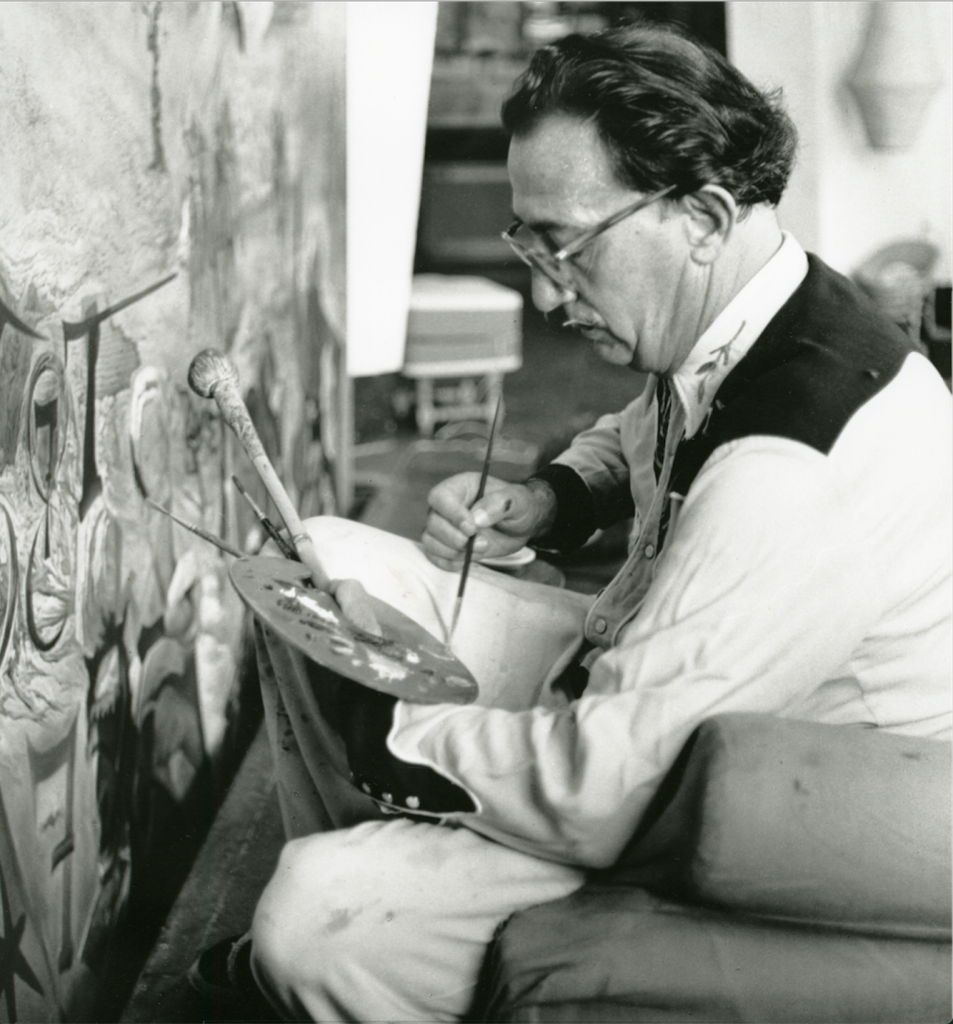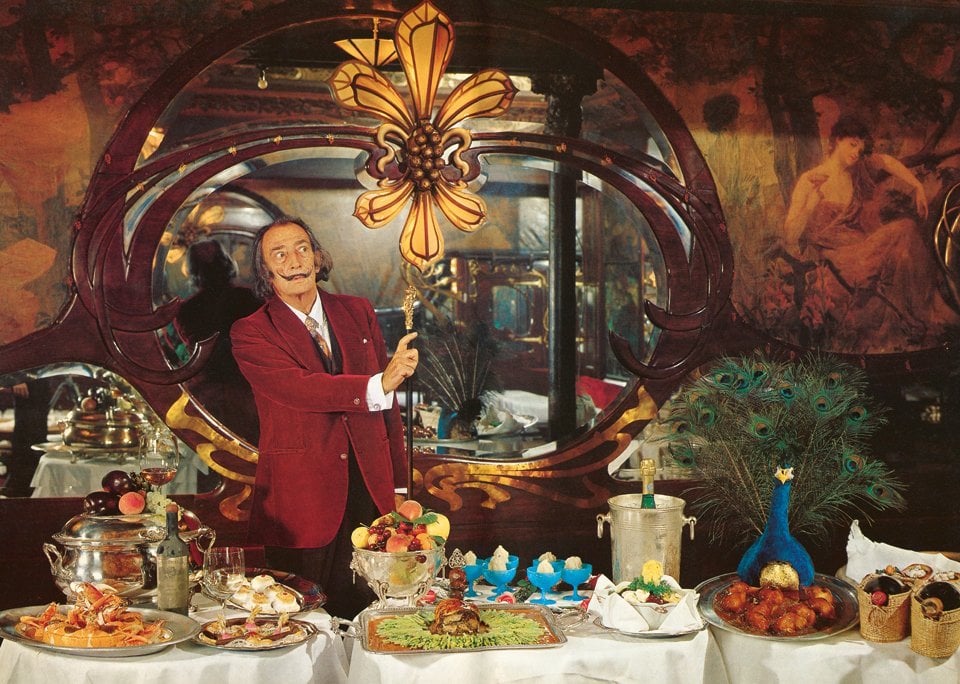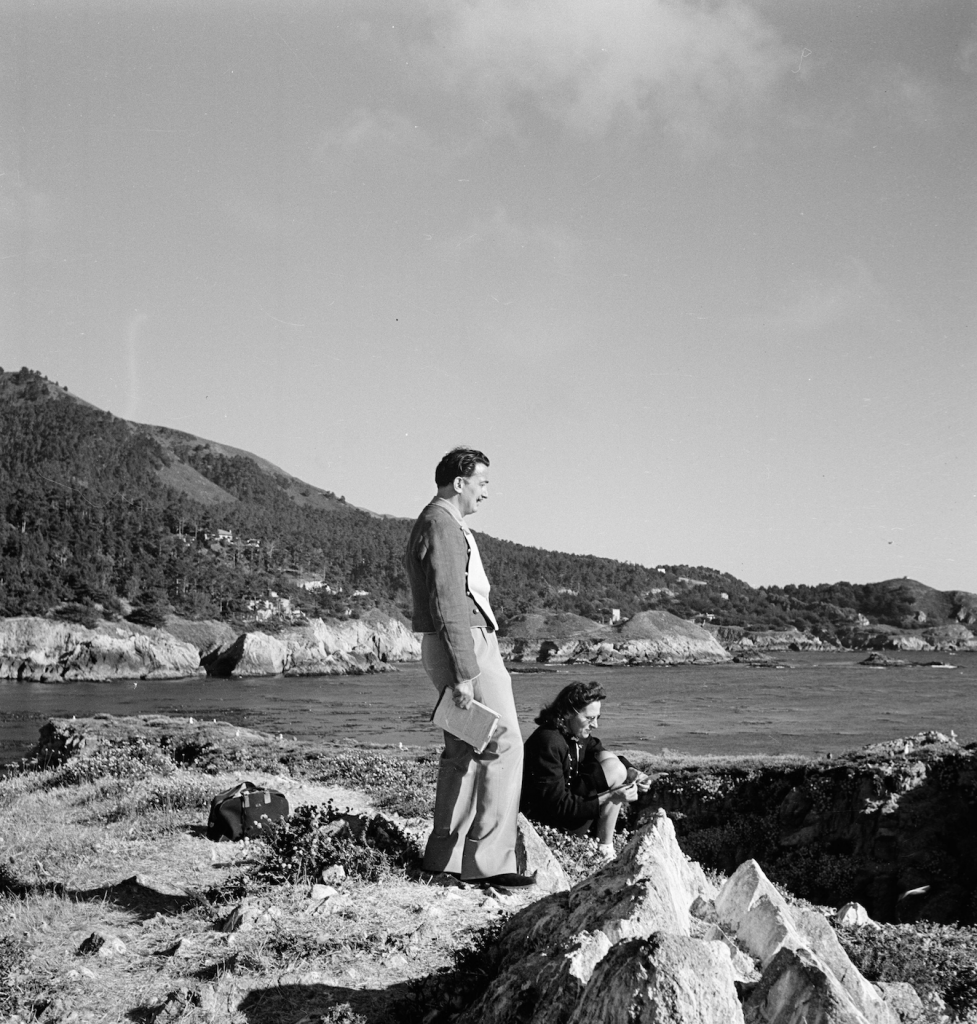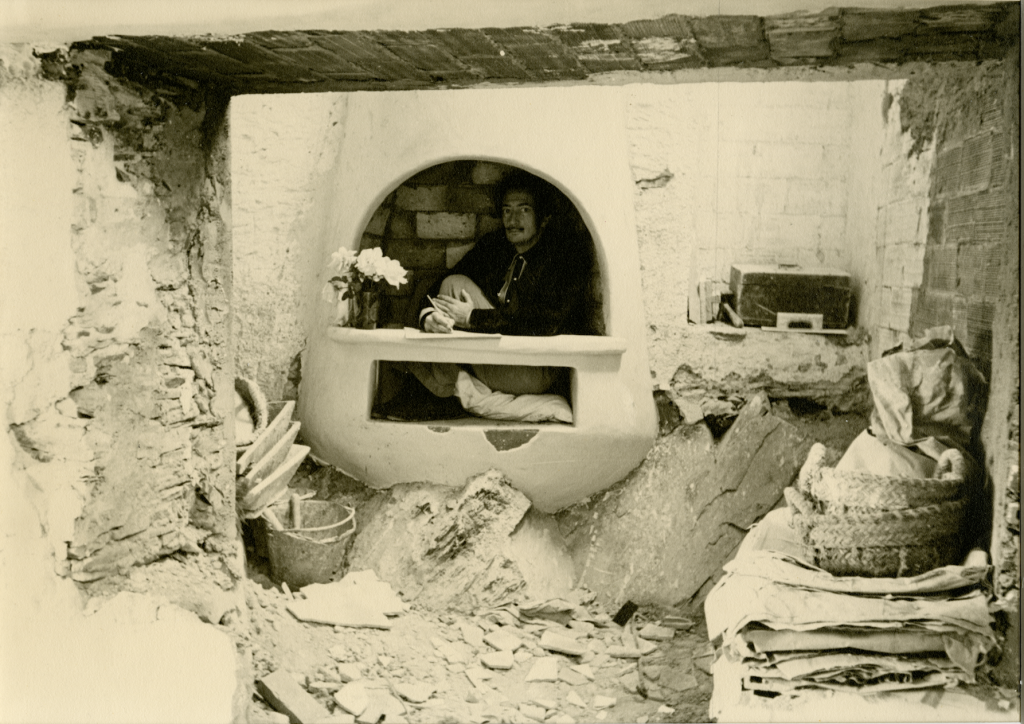Art & Exhibitions
Salvador Dalí… Introvert? A New Show Looks at the Quieter Side of the Debaucherous Surrealist’s Life
In nearly 40 portraits, Dalí is presented informally, at times even tenderly, as he works and relaxes at his home.

In nearly 40 portraits, Dalí is presented informally, at times even tenderly, as he works and relaxes at his home.

Katie White

Salvador Dalí painted an outlandish and dream-like universe. On occasion, he and his wife, Gala, brought those visions to dazzling life with outlandish parties hosted at their home in Portlligat, Spain.
The Surrealist couple’s soirees are the stuff of legend. Elaborately staged costumes were a must, with guests and hosts decked out in all manner of concoctions.
Wild animals were often on the guest list, too, and could be found roaming freely through the Dalí’s fascinating home.
At one such fête, Gala Dalí spent much of the evening reclining in a broad, velvet-covered bed, with a costume horse’s head crowning her head. Waiters served her food in a golden slipper, as a lion cub on a lease on the bed beside her (the party was, believe it or not, a benefit for refugees).
Despite (or because of) how extravagant the parties were, rumors swirled that the couple was involved with something more illicit. Orgies or satanical cabals were not infrequent accusations.

Salvador Dalí, Les Dîners de Gala (pp. 16-17). Courtesy of Taschen.
Though that was more the stuff of gossip, the Dalís’ culinary predilections were no more puritanical, as evidenced in the artist’s 1973 Surrealist cookbook Les Dîners de Gala (the dazzlingly illustrated book was reissued by Taschen in 2016).
On the menu, one finds Frog Pasties, Toffee with Pine Cones, and, yes, a Peacock à l’Impériale dressed and surrounded by its court, which features a taxidermied peacock presented on a platter. Dalí described the recipes not as healthy (never!), but “devoted to the pleasure of taste.”
Those pleasures of taste came, of course, at great material expense—financial burdens which the artist and Gala, who was also his manager, funded through commercial endorsements including advertisements for Lanvin chocolates, which further played up the mustached caricature of Dalí’s persona. Such enterprises earned the couple derision in many circles; André Breton nicknamed Dalí “Avida Dollars,” an anagram of the artist’s name meaning “eager for dollars.”
But now a new exhibition, “Dalí at Home,” at the Dalí Museum in St. Petersburg, Florida, presents a softer look at the artist’s years in Portlligat. While photographs of Dalí in flamboyant poses drew wonder and disdain from the public alike, there were, as the exhibition shows, a few photographers who formed intimate friendships with the artist, gaining access to the personal and very private world he kept in Cadaqués, Portlligat, and nearby Figueres, the town where he was born.

Horst P. Horst, Salvador and Gala Dalí (1950/2016). Collection of The Dalí Museum, St. Petersburg, FL. Courtesy of Condé Nast and the Horst Estate.
In nearly 40 portraits by the photographers Horst P. Horst, Ricardo Sans, Melitó Casals, Lies Wiegman, and Robert Descharnes, the artist is presented informally, at times even tenderly, as he works, relaxes, and chats with friends at his home.
Primarily taken in the 1950s and early 1960s, one sees a different Dalí—an artist who (even momentarily) appears unaware of himself. One photograph by Horst shows Dalí and Gala walking along the rocks of Costa Brava, chatting. In another, Dalí is snapping a simple photograph of Gala in an olive orchard.
The home in Portlligat (today the Salvador Dalí House-Museum) held deep sentimental value for the artist, which may explain the unaffected ease of these images. He lived and worked in the house for most of his life: it was his primary residence from 1930 to 1982, aside from his years spent in the United States.
Impoverished and financially cut off from his family, Dalí first set up a home in a small fisherman’s hut in the town, drawn to the isolated landscape and the light (many of his paintings are based on its landscape), and spent some 40 years building it out. (In 1968, Dalí purchased a castle in Púbol, Spain, as a retreat for Gala. With their relationship growing increasingly rancorous, Gala moved to the castle full time soon after. Dalí was apparently only able to visit her by invitation).
“Portlligat is the place of production, the ideal place for my work,” the artist once said. “Everything fits to make it so: time goes more slowly and each hour has its proper dimension. There is a geological peacefulness: it is a unique planetary case.” The home, he explained, had a biographical element to it.

Ricardo Sans, Dalí in Fireplace (1950) Collection of The Dalí Museum, St. Petersburg, FL. Courtesy of Ricardo Sans, © Fundació Gala-Salvador Dalí, Figueres, 2020.
Over the decades, this wholly unique home became—rather than a place of pure spectacle—something quite cozy, filled with mementos, carpets, and velvet pillows, gatherings of dried flowers, and antique furniture. In one photograph the artist is crouching inside a fireplace writing or drawing, almost like a small child hiding at home.
“There is only one difference between a madman and me,” Dalí famously quipped. “The madman thinks he is sane. I know I am mad.”
What these pictures seem to say is that even madness can sometimes look quite ordinary.